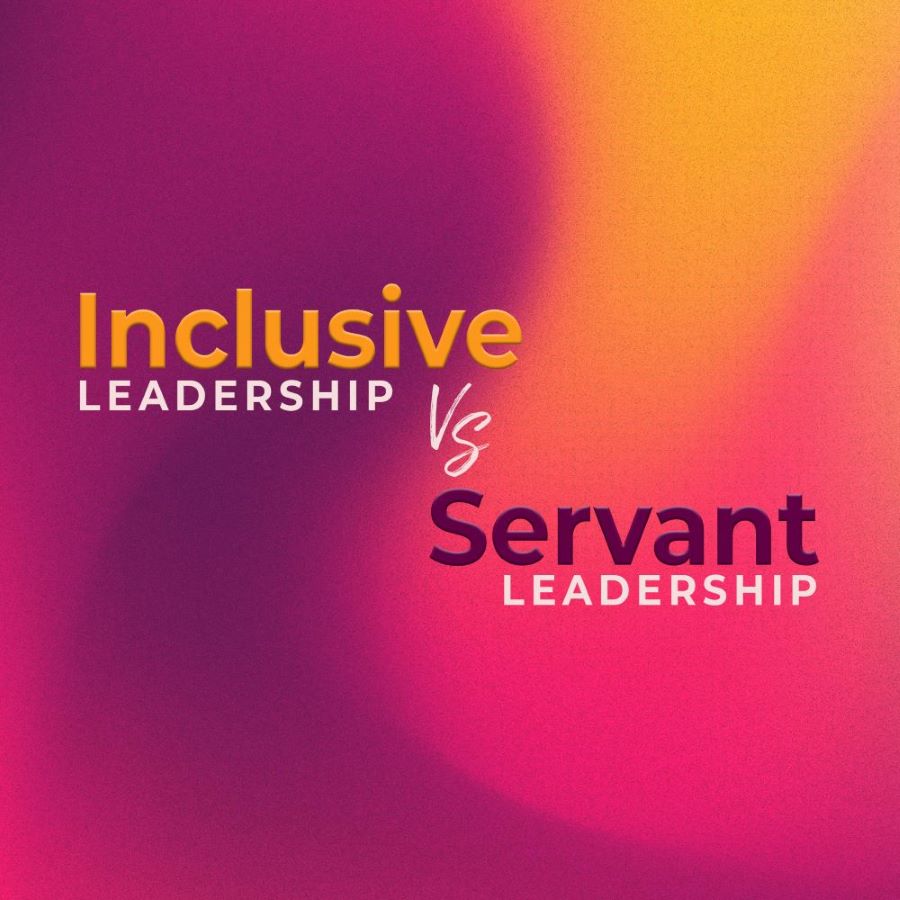Overview:
- Both inclusive leadership vs servant leadership promote inclusivity while following different factors and philosophies.
- These leadership styles are growing popular these days due to the supportive environment they create.
- The underlying principle for both is employee well-being, the difference being that servant leadership is a broader concept.
- Successful real-life examples show us the long-term benefits of both leadership styles.
In this generation, various types of leadership are being experimented with to create an amiable environment in the workplace. It’s important to know the difference between inclusive leadership vs servant leadership. This is because they both encourage inclusivity and diversity while focusing on distinct elements. Let‘s explore the various factors that define each of these leadership styles.
Qualities of a Good Inclusive Leader
Inclusive leadership style promotes a bias- and discrimination-free culture in an organization.
The main question remains how to be an inclusive leader?
The leaders need to be informed about the happenings in their company and be active in making decisions. This includes setting clear boundaries on what is not expectable and promoting employees from different backgrounds. Some key characteristics of this form of leadership are discussed below.
Diversity and Inclusion
This leadership style is followed to make an comprehensive environment where people from different backgrounds, genders, and cultures are welcomed. Leaders take initiative and sometimes even form separate departments to create better communication among employees. Various team-building activities are held, employees are encouraged to participate actively and share their grievances if they feel discriminated against.
Equal Treatment
It’s important to treat each member equally. Every employee gets equal scope to learn and grow. This is not only focused on different departments but also for leadership positions. Resources and opportunities are distributed fairly based on merit, not on a person’s background.
Cultural Competence
It’s important to create a safe environment and make rules that suit everyone. Respecting everyone’s culture and not solely focusing on a particular culture becomes imperative. This also allows workers to know more about diverse backgrounds and learn from different histories. It’s necessary to ensure that no culture is belittled and there is mutual respect among the employees.
Collaboration
Leaders need to make sure there is collaboration among employees across the organization. Encouraging teamwork and collective problem-solving not only helps employees feel connected but also increases work efficiency.
Consistency and Commitment
The most crucial aspect for a leader is to be consistent in his or her efforts. This is because creating such an environment takes time. It’s important to be patient during the process and avoid appearing forceful. The activities must be conducted regularly in a way that people enjoy each other’s company and value one another increasingly.
What is Servant Leadership?
Servant leadership is a style of leadership where leaders empathize with their employees and give priority to their worker’s needs. Sometimes, even above their own.
It is based on the ten principles first originated by Robert Greenleaf in 1970, through his essay “ The Servant as Leader”. The principles include listening, empathy, healing, awareness, persuasion, conceptualization, foresight, stewardship, commitment to the growth of people, and building community. Some of these are discussed below.
Empathy
A servant leader is someone who listens and is a good communicator. It’s about putting yourself in the shoes of the employee and delivering their needs. This form of leadership is based on the fact that the emotional well-being of the workers promotes a happy environment , increasing efficiency.
Stewardship
Stewardship means responsible and structured management of an organization. A leader must distribute the company’s resources efficiently among the employees. Not only to cater to their financial needs but also to engage in community-building activities regularly.

Foresight
A leader needs to foresight future expectations and growth of a company. All their plans should lead to somewhere, but they also need to be ready for different case scenarios. This helps them serve and prepare their employees better, instead of burdening them with instant work.
Conceptualization
The leader acts on the expectations before setting them on for his employees. That means they have to act as role models both in cases of actual tasks and to promote inclusivity. Also, the leader should be willing to admit their own mistakes and learn from them. Accountability is another major element here.
Community Building
Everything is done so that all workers are happy within the organization. All rules and regulations are set to benefit all employees without any discrimination. This is how inclusivity and diversity is promoted in the workplace and everyone feels safe to communicate their problems and expectations.
Real Life Examples
In servant leadership the main aim of the leader is to help others before them. These include both their consumer base, and their employees. People practicing medicine, or working for NGOs are few examples.

Another instance could be seen through Howard Schultz, who was the CEO of Starbucks. He wanted to create an experience for his customers and not just sell coffee. The first step was that he ensured his employees were treated well. He provided medical insurance to them, even including part-timers. He even made arrangements to provide free college education to his employees. His aim was to promote the well-being of his workers which inherently promoted the Starbucks customer base.
Companies such as Southwest Airlines, Patagonia, and Zappos also follow servant leadership.
Inclusive leadership, on the other hand, promotes employees well being by encouraging diversity and equality for all workers.
McDonalds’ boosts women through tech and overall promotes inclusivity through their tagline “Better Together’. Similarly, Sodexo is set to bridge the payment gap between men and women by 10% by 2025. Some other notable companies are Google, Accenture, Microsoft, and Salesforce.
Inclusive Leadership Vs Servant Leadership: Pros and Cons
Inclusive leadership style is hard to achieve, henceforth the efforts need to be continuous. Also, there is no point in forcing the employees to follow a set of rules. Even though some boundaries are required, this leadership style is achieved slowly. Team building activities need to be conducted regularly so people feel at ease with each other. It is suggested to follow inclusive leadership for success in diverse workplaces.
However, the long-term benefits really improve the environment of a workplace. People work together, innovate together, and respect each other. Also, this ensures talented people are recruited without any biases which makes work more productive and efficient.

Servant leadership requires a leader to take into account the benefits of all employees. It is therefore a much broader concept. This makes it hard for leaders to make rapid decisions, burdening them with responsibilities out of their control.
If a company is able to achieve servant leadership, it allows greater trust between the management and the workers. Individuals are happier working in a supportive environment which encourages them to work enthusiastically for the company. Also, people feel open to sharing their ideas. This leads to creativity as people become more involved in the decision-making process.
The best part about both forms of leadership style is that employees’ well being is prioritized, unlike in transformational leadership. Here, the company is given the first thought, and policies are made for the betterment and profit of the organization.
Conclusion
Both forms of leadership follow the same principle of promoting employee well-being. The major difference between inclusive leadership vs servant leadership lies in their key characteristics. While inclusive leadership is based on equal treatment from all backgrounds, servant leadership goes beyond that for employee well-being.
FAQs
What is Inclusive Leadership?
It is a form of leadership where people from diverse backgrounds are welcomed and supported equally. It creates an environment where everyone feels appreciated and there are no biases.
What is the Difference Between Inclusive Leadership vs Transformational Leadership?
In transformational leadership, employees are encouraged to think beyond their self-interest for the betterment of the company. Whereas inclusive leadership is about nurturing an individual and making them feel valued. This is a major difference between both, wherein efficiency matters more in transformational leadership.
What is an Inclusive Servant Leader?
These leadership styles incorporate both inclusive and servant leadership and are primarily based on the overall development of workers. It includes treating every employee equally, providing them with equal resources, and giving them the same opportunities to succeed.


